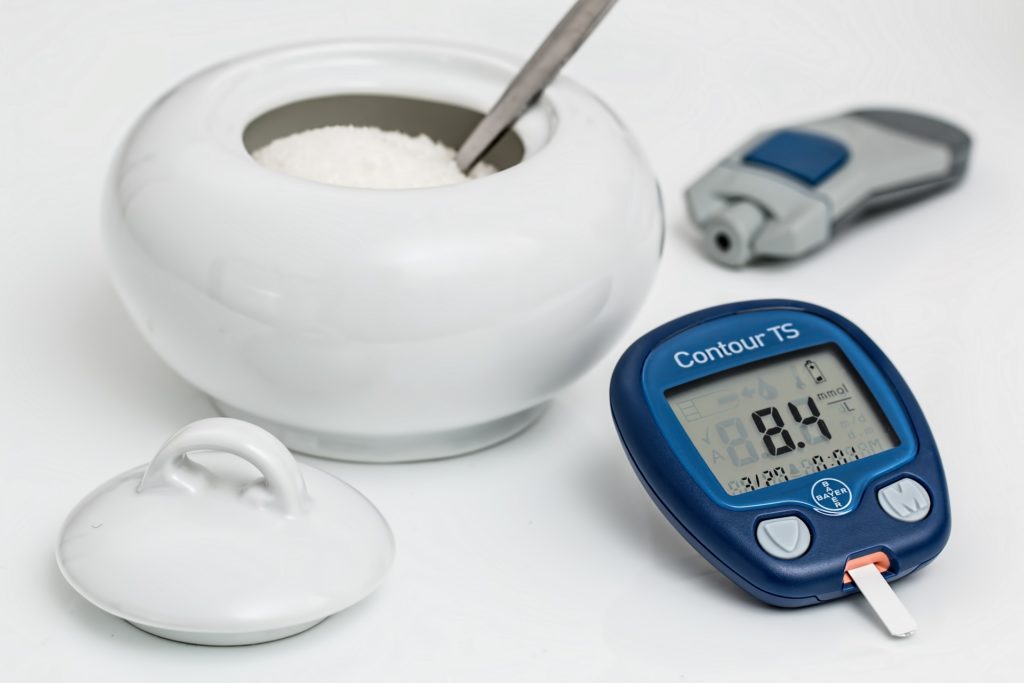
Insulin is an essential hormone produced by specialised cells in the pancreas. It is the primary anabolic hormone of the body, specialising in the metabolism of carbohydrates and especially blood glucose levels. The hormone promotes the absorption of blood glucose by the cells in the liver, fat and skeletal muscles. The glucose is stored in a form known as Glycogen. This lowers blood glucose levels.
But when the insulin released by the pancreas fails to trigger the same effect on body cells, and the cells start ignoring the instructions by insulin, our blood glucose level can increase to alarming amounts. This pathological condition is called Insulin Resistance. This sends the pancreas into overdrive and it starts making more insulin. Our blood glucose level stays in a normal range unless the pancreas is able to generate enough insulin in the excess.
Sources of Glucose and why is it useful?
Glucose is derived from the carbohydrates in our food and is the primary source of energy for the human body, driving many essential biochemical reactions and is the only source for our brain. Sources of carbohydrates include potatoes, honey, sugars. Beans, cookies, soft drinks to name a few.
What causes insulin resistance and why do a majority of Indians have it?
Carbohydrate centric lifestyle
Indian food is rich in carbohydrates and proteins, carbs being on the higher side. An Indian diet certainly places more emphasis on carbs, leading to insulin spikes after every diet. As the glucose in carbohydrates is absorbed by cells as glycogen. More insulin secretion may lead to desensitization of the glucose absorbing cells resulting in the insulin resistance.
After every meal, when the digestion process begins in the stomach, glucose is absorbed into the bloodstream to trigger the release of insulin. The cells releasing insulin, might become weak over time, and may lead to the development of type-2 diabetes.
Nutrient-dense versus Calorie-rich diet
This is yet another important aspect to consider. Calorie rich diets are a poor choice owing to the fact that excess calories are stored as fat in the body. The stored fat might lead to the onset of obesity, which itself comes with the host of other problems. The Indian diet is somewhat calorie centred with most of the emphasis being laid on chapatis, bread and rice. A nutrient-rich diet, on the other hand, is rich in Vitamins and minerals. These micronutrients are essential for the healthy functioning of the body.
Visceral fat has often been branded as the main culprit. The term refers to the excess fat near the abdomen and is responsible for increasing our waist diameter. Several studies have proven that while visceral fat is our energy storage, it also leads to the production of harmful substances. With the increase in the prevalence of obesity in Indians, insulin resistance is spreading fast.
The emergence of a large middle class, where most of the work is confined in a room is cutting down heavily on our physical exertion. The resulting inactivity blunts our body’s metabolism.
Risks associated with Insulin Resistance
Insulin resistance comes with its own risks. An already overwhelmed pancreas produces more and more insulin. Over time, the beta cells responsible for insulin production weaken and are not able to produce enough insulin, and blood glucose levels surge. This leads to a condition called prediabetes. When there is not enough insulin, the glucose stays in our bloodstream, leading to type-2 diabetes in the long run.
Indians are at an increased risk against insulin resistance because most are unfamiliar with the notion of regular health checkups. Initial symptoms are very mild, including the darkening of the skin near the armpits. The symptoms are generally overlooked and are left undiagnosed.
What can be done against it?
According to a study published in the National Institute of Diabetes and Digestive and Kidney Diseases, maintaining a healthy weight body weight and exercising regularly might keep Insulin resistance at bay. Genetics is an important factor in determining the risk on an individual meaning that if a person has a family history of insulin resistance or diabetes. The same study quotes that the people with abnormally high levels of cholesterol and high blood pressure are at an increased risk. All studies point to the one recurring fact that physical exercises might be an effective tool against the insulin resistance. Taking small steps towards a healthier lifestyle, eating nutritious foods may equip our bodies against insulin resistance.
Studies further prove that exercise may delay the onset of prediabetes in individuals under high risk towards the condition. According to the National Institutes of Health-funded research study, losing 5-7% of the body weight significantly reduced the risk of developing insulin resistance.
A sedentary lifestyle is leading to this pathological condition which whirls down into a host of other problems, taking a big toll on our general health. Though not all risk factors can be addressed entirely, we can certainly adapt to a lifestyle that does not put us in harm’s way. Insulin resistance can lead to a host of other chronic diseases, yet this condition can be improved on by fairly simple lifestyle measures.

